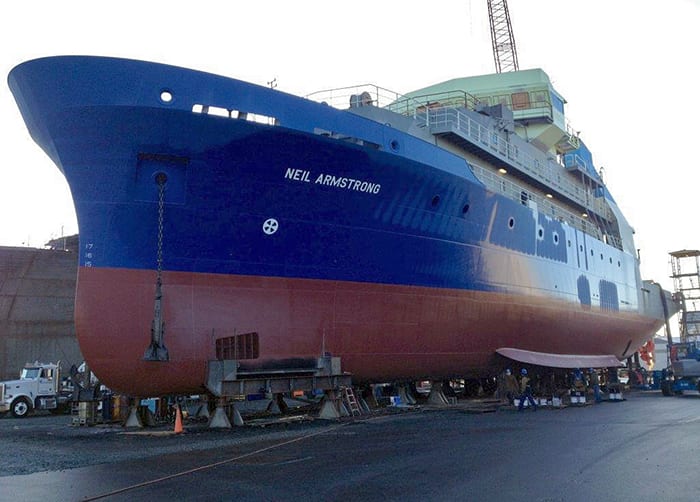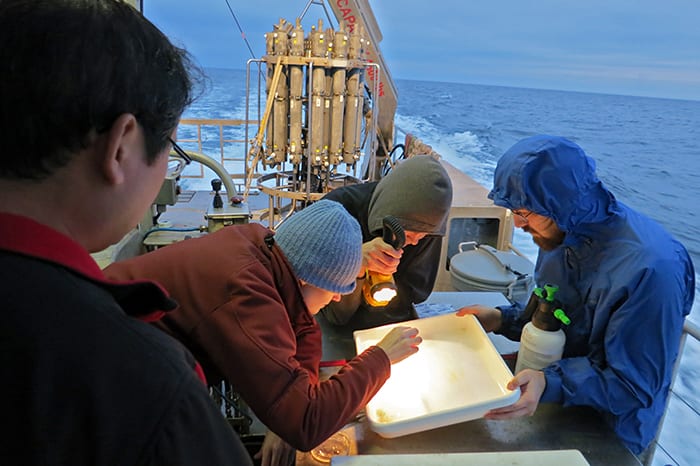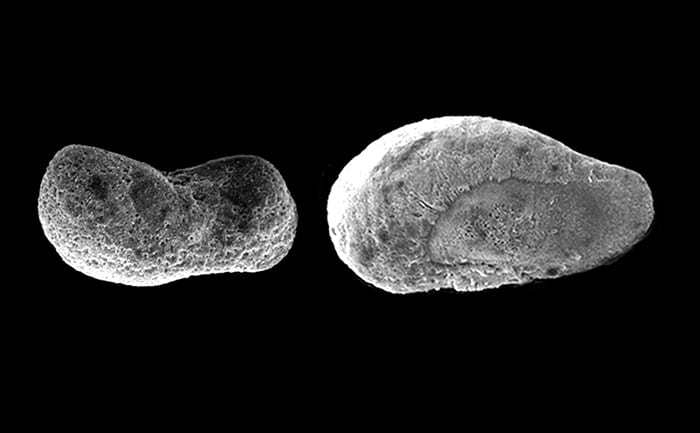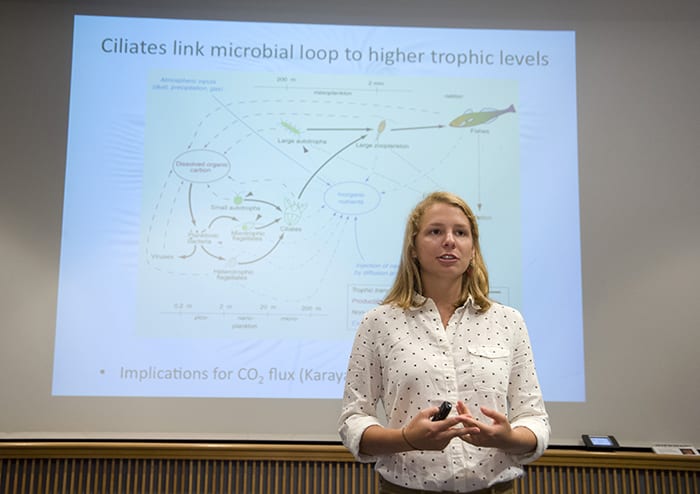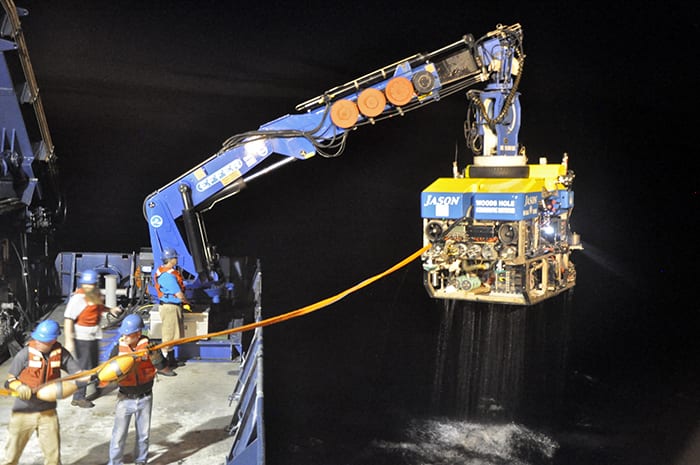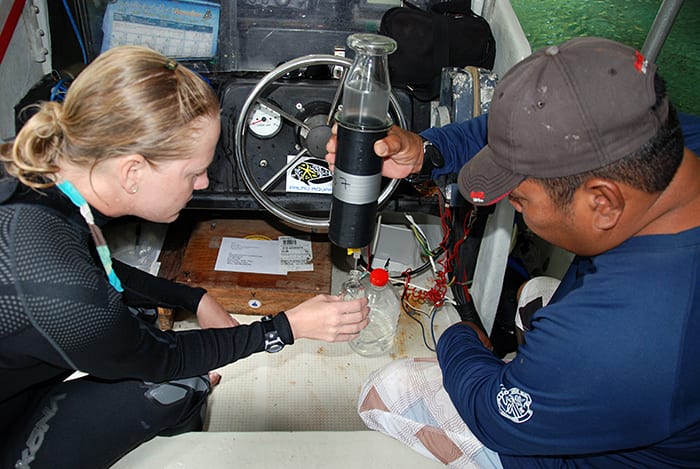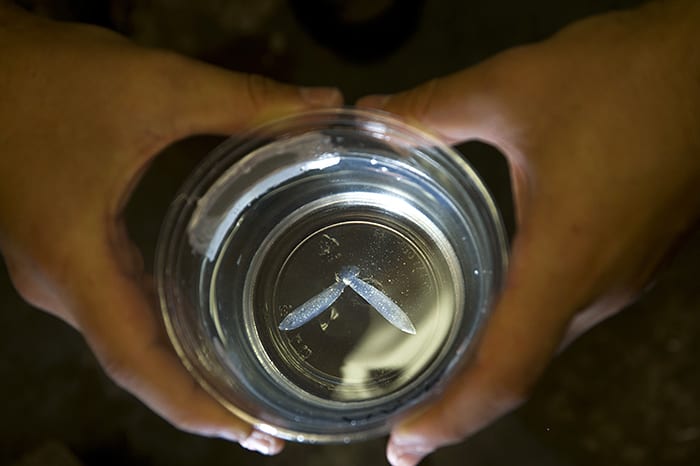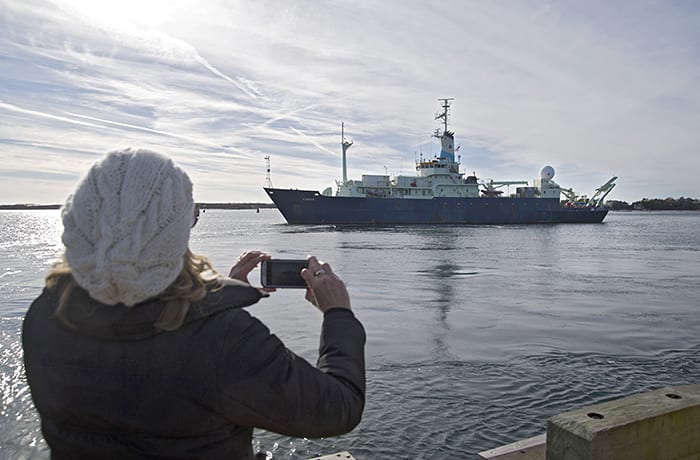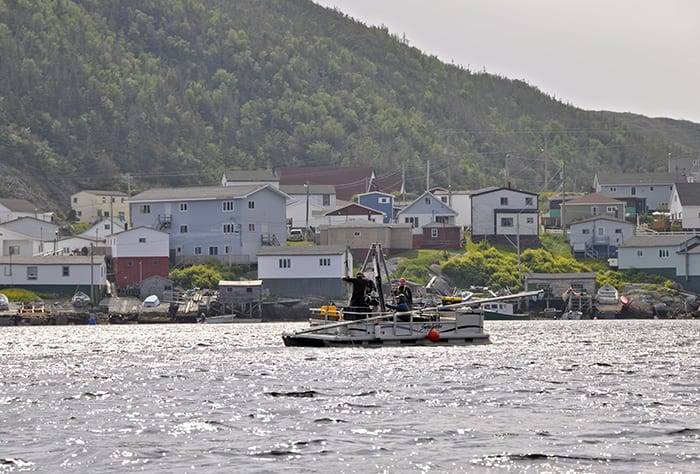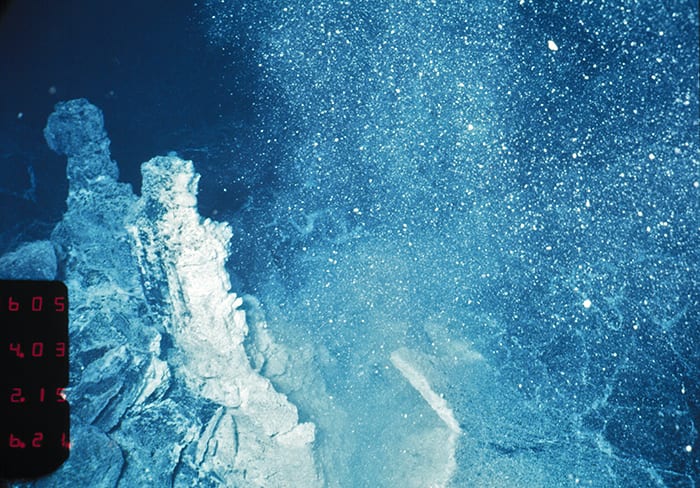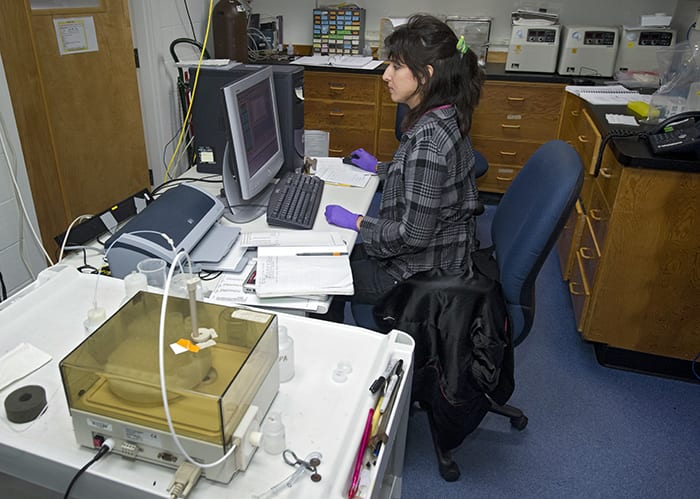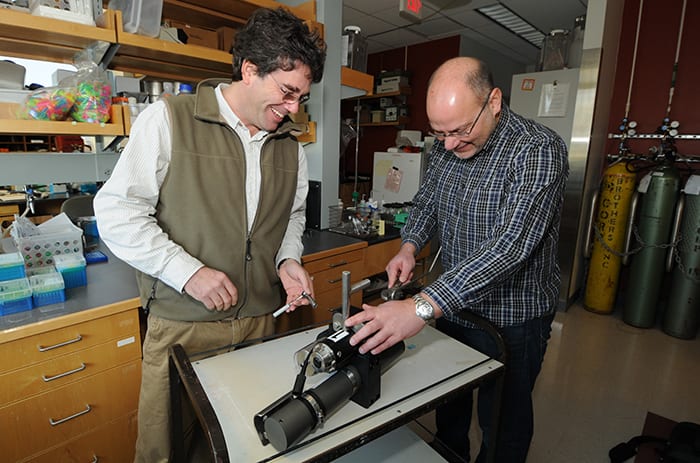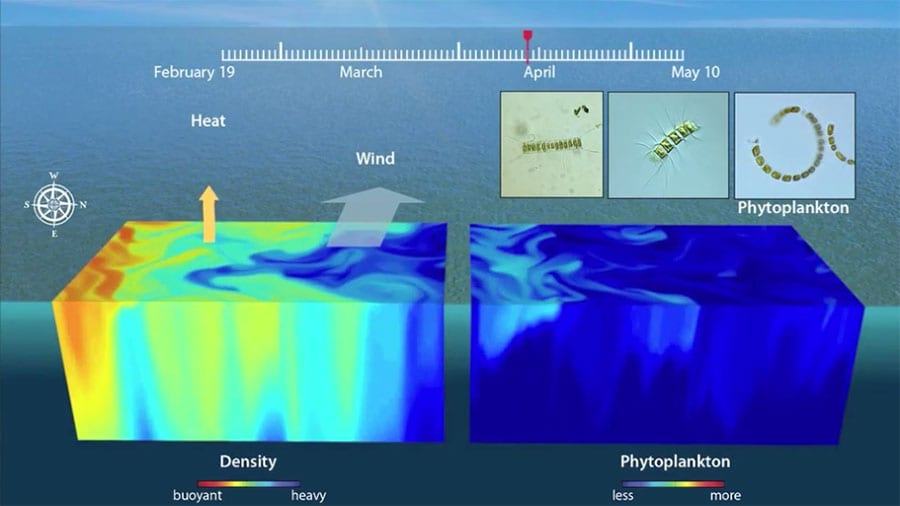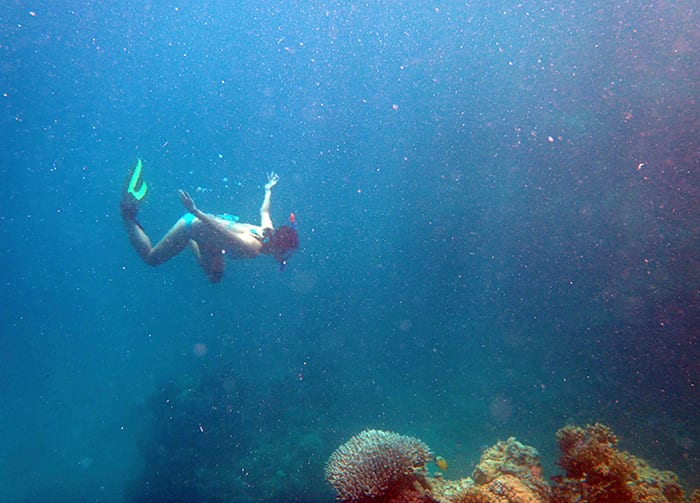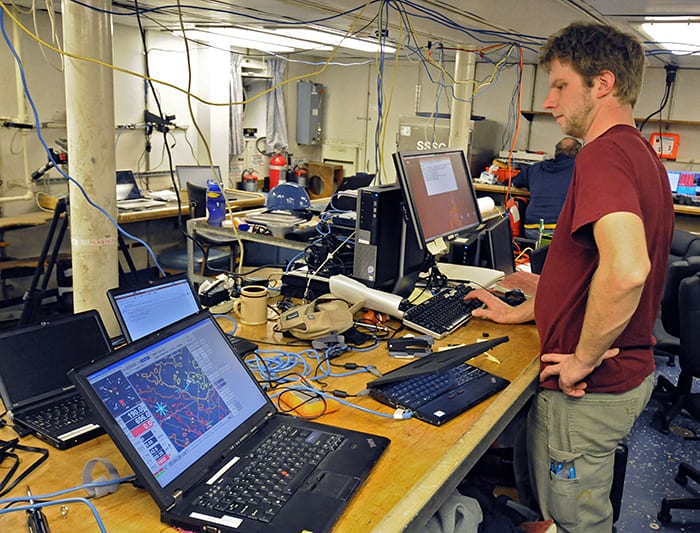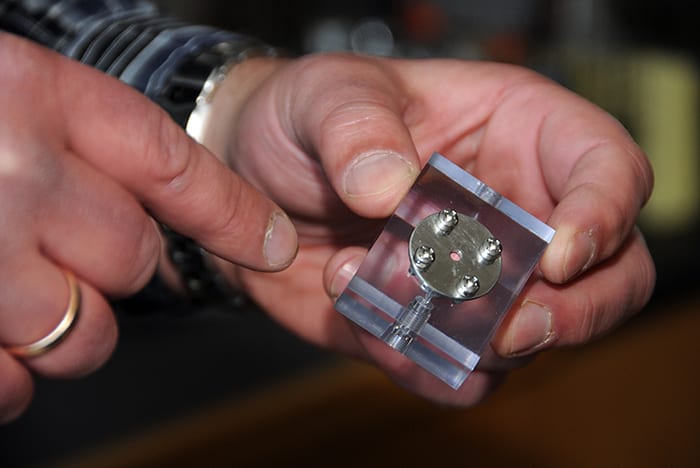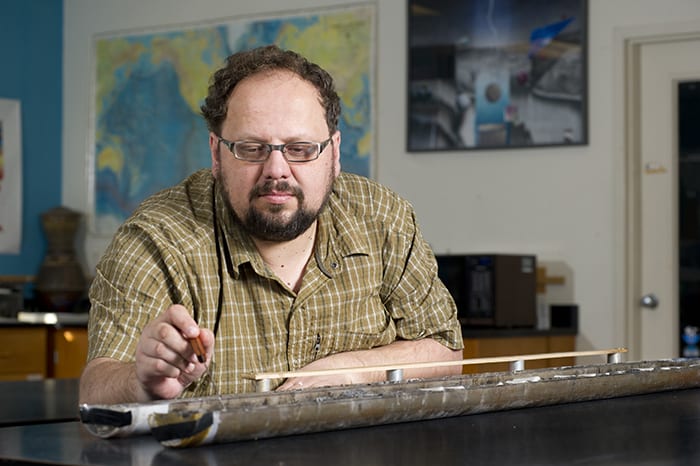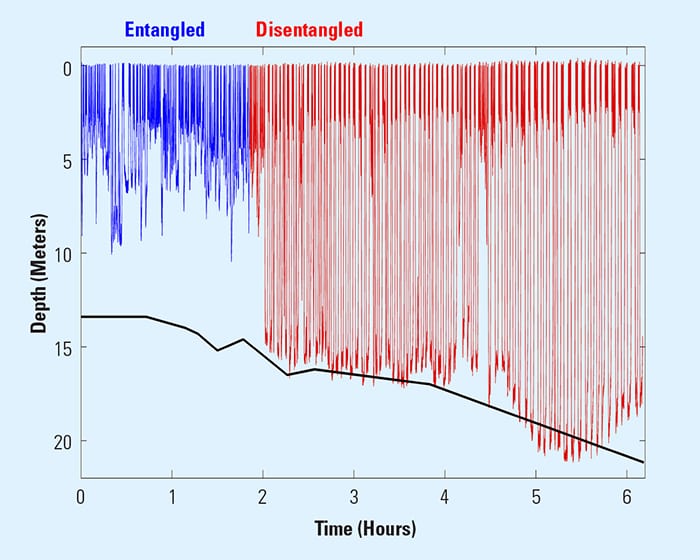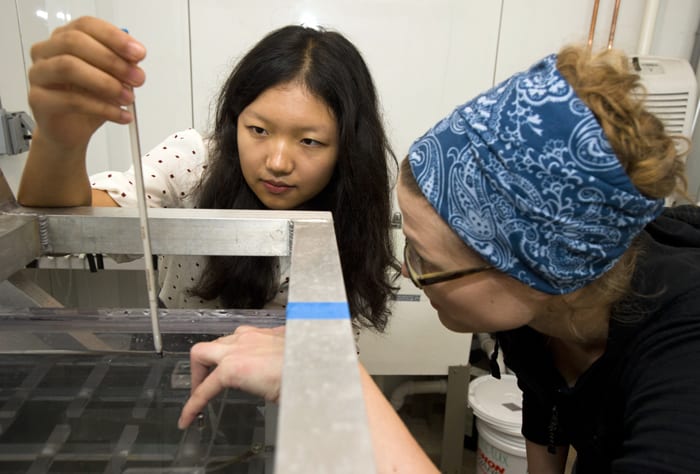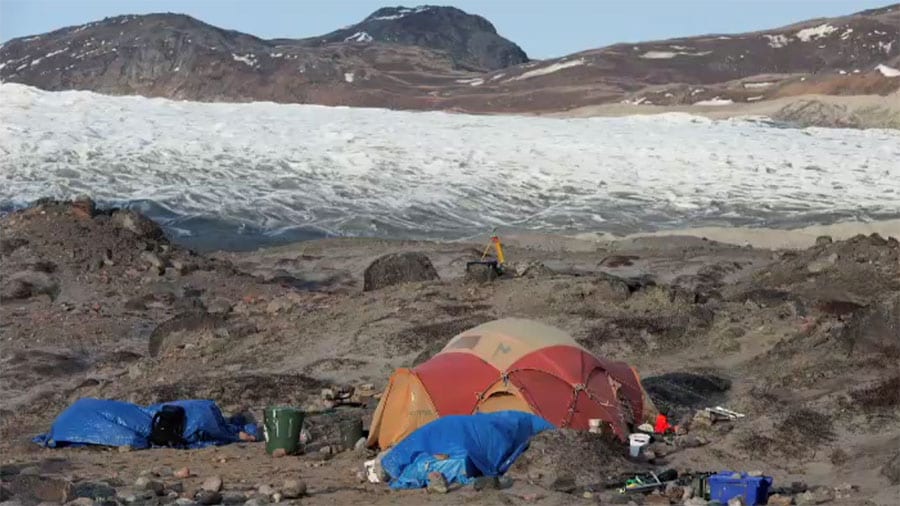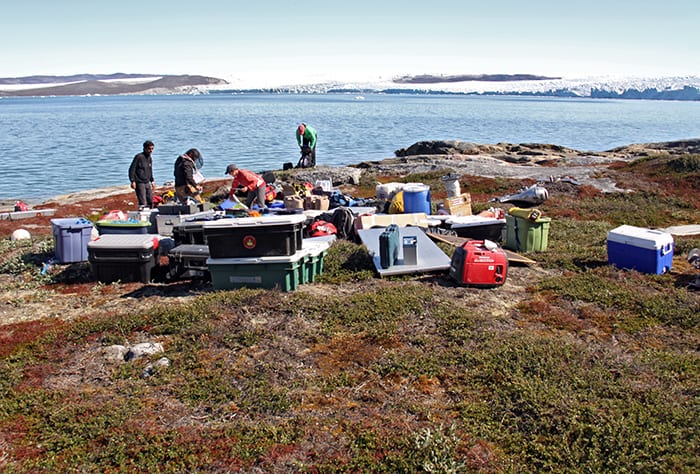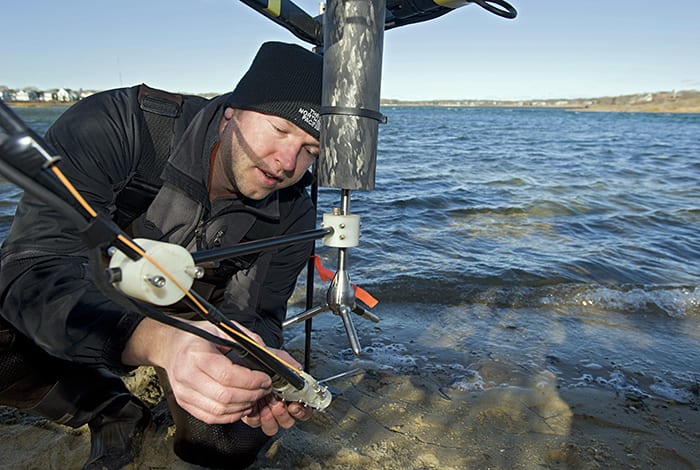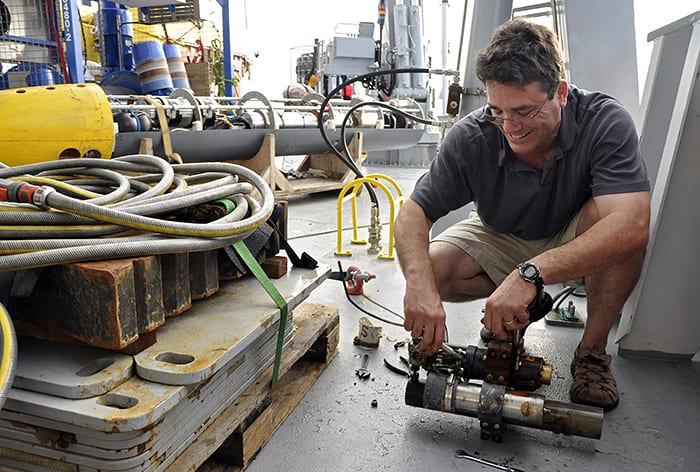Multimedia Items
Next in Line
When it joins the Institution’s fleet late in 2014, the newly-built R/V Neil Armstrong will be the twentieth ship operated by WHOI. In the early years of ocean science research…
Read MoreLight Work
Aleck Wang, Amy Maas, Gareth Lawson, and Alex Bergan (left to right) ventured out on WHOI’s coastal research vessel Tioga this fall to study changes in the marine environment of…
Read MoreThe State of Statoliths
Squids make statoliths, an important part of their balance organ, from calcium carbonate. But increasing atmospheric carbon dioxide levels is causing ocean acidification, which reduces carbonate in the oceans and…
Read MoreFuture of Ocean Science
Summer Student Fellow Anna Nisi shares the results of her research on the marine microbial food chain at the end of the Summer 2013 session. The Carleton College student worked with…
Read MoreUp From Below
A crane hoists Jason, WHOI’s 9000-pound remotely operated vehicle (ROV), onto the deck of the research vessel Atlantis. The deep-sea robot had just spend several days more than one mile…
Read MoreResilient Reefs
WHOI post-doctoral scholar Kathryn Shamberger (left) and an employee of the Palau International Coral Reef Center collect a water sample during field research in November 2013. Shamberger is part of…
Read MoreHolding the Key
As the oceans become more acidic due to the increase of carbon dioxide in the atmosphere, marine scientists are studying how organisms, such as the several hundred young squid developing…
Read MoreThere and Back Again
R/V Knorr is a common sight in Woods Hole, but its departure still draws a crowd, especially when it leaves for far-flung places. Here, the ship pulls away from the WHOI…
Read MoreDynamic Duo
The remotely operated vehicle (ROV) Jason is actually one part of a system that also includes the ROV Medea. Shown here during a recent nighttime recovery in the Pacific above…
Read MoreLittle Boat that Can
Not all of WHOI’s research fleet are large, far-ranging vessels with large crews, but all take scientists places they couldn’t otherwise go to gather data they couldn’t otherwise get. Here,…
Read MoreSeafloor Snowblower
Scientists diving in the submersible Alvin in 1991 found themselves in something that looked like a snowstorm on the bottom of the sea. They had arrived soon after a seafloor…
Read MoreCalcium in the Carbon Cycle
MIT-WHOI Joint Program graduate student Sara Rosengard measures the amount of calcium in seawater samples using an inductively coupled plasma mass spectrometer (ICPMS). The amount of calcium helps Rosengard determine…
Read MorePartners in Science
Marine chemist Jeff Seewald (left) and microbiologist Stefan Sievert adjust an isobaric gas-tight sampler (IGT) they are using during their Dive & Discover cruise to hydrothermal vents along the East…
Read MoreSurprising Trigger Causes Phytoplankton Blooms in North Atlantic
By Lonny Lippsett :: Originally published online January 14, 2014
Read MoreDown Time
After a trying day of bathymetric surveys, a science party from WHOI and King Abdullah University of Science and Technology (KAUST) spent some time free diving over Shi’b al Qasriyyah,…
Read MoreNew Bedford Family Science Nights
On Thursday, January 16, from 5:30-7:30 p.m., New Bedford’s Ocean Explorium will host the first of two free “Family Science Nights.” In addition to special activities, the event will feature…
Read MoreOxygen On Tap
This small device allows scientists to measure oxygen levels in fluids collected at the seafloor under very high pressure. Designed by WHOI scientists Craig Taylor and Jeff Seewald, as well…
Read MoreGeology Detective
A team of geologists led by Liviu Giosan pieced together the most complete picture illustrating the growth and destruction of the Danube delta at the mouth of the principal European…
Read MoreLeviathan Unbound
Red and blue lines describe the depths of a whale’s dives in work by WHOI-MIT Joint Program graduate student Julie van der Hoop and biologist Michael Moore, director of the…
Read MoreOysters in the Rough
MIT-WHOI Joint Program student Jeanette Wheeler (right) and 2013 Summer Student Fellow Elaine Luo prepare a tank to video the movement of oyster larvae. Wheeler is studying the behavior of the larvae…
Read More80 Days in Greenland
Follow MIT/WHOI graduate student Ben Linhoff as he spends the 2012 field season camped at the foot of the Leverett Glacier in western Greenland watching the glacier and ice sheet…
Read MoreMaking Camp
Researchers collect gear delivered by helicopter at a site in West Greenland. The expedition led by WHOI oceanographer Fiamma Straneo and glaciologist Sarah Das in the summer of 2013 was…
Read MoreProof of Concept
Matt Long sets up the prototype of his new eddy correlation hydrogen ion and oxygen exchange system (ECHOES) on Great Pond in Falmouth on a cold November day. Developed over…
Read MoreLost and Found
In 2009, the hybrid remotely operated vehicle Nereus became stuck in a patch of muddy seafloor at 5000 meters depth. To regain the vehicle’s buoyancy, chief scientist Chris German made…
Read More
